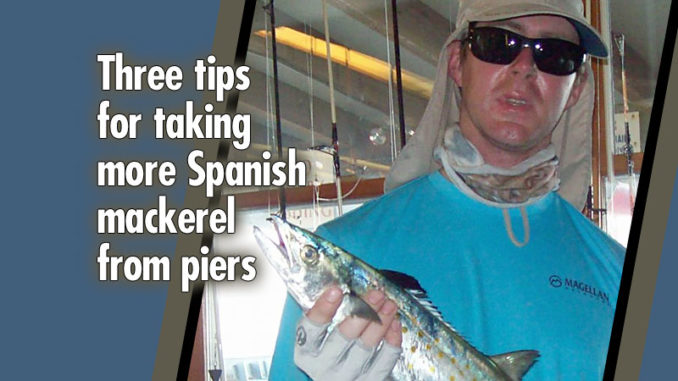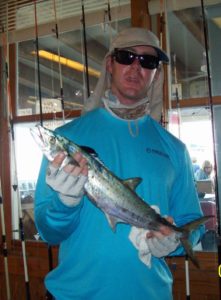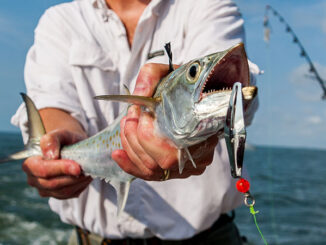
Grand Strand’s mackerel run has opened early this year
The Spanish mackerel have showed up a little earlier than normal this year around Grand Strand piers, and anglers are catching them using three different methods. Angler Matthew Hearn of Murrells Inlet said the bite should stay hot for the next few weeks and said all three of these methods should work throughout the Spanish run.
Fishing with live bait is Hearn’s No. 1 tactic for catching Spanish when the first begin to show up.
“Most any baitfish will do. Mud minnows work fine and are easy to find. Menhaden seem to be a little better,” Hearn said.
Hooking the baitfish on a No. 1 live-bait hook, Hearn uses a 3-foot leader tied to a popping cork rig and casts away from the pier, then works the bait back in. He snaps his wrist, reels in the slack and lets the bait settle down for a moment, then starts the retrieve again. Once the cork is within a few feet of the pier, he places the rod in a rod holder and lets the live bait swim around to attract mackerel.

Using casting plugs and spoons is another effective way of landing Spanish. Hearn said most anglers rely on the Got-Cha plug.
“It’s a great lure that has probably caught more Spanish than any other lure on our piers,” said Hearn, who prefers to use a Kastmaster spoon instead. “Some days, I have a dozen guys all around me, all throwing Got-Cha plugs. They usually catch Spanish before I do, but I usually catch more. I think it’s because I’ve got something a little different. I simply cast, let the lure sink for a few seconds, then reel it back in. Sometimes I burn it in fast, and other times I will reel, then pause, then reel again.”
Jigging is Hearn’s other method.
“I stick with my Kastmaster spoon when jigging; Sabiki rigs with multiple unbaited gold hooks will work, too,” he said. “I will use a heavier one that can sink quickly no matter how hard the tide is running. I try to keep it as close to the pier pilings as I can, and I like to have enough line out that I can move my spoon or rig up and down about four feet at a time.”
Hearn said while most anglers insist on using wire leaders for Spanish, he opts for heavy fluorocarbon line instead.
“I use 40-pound fluoro. It’s invisible to the Spanish, who will shun lures with wire leaders sometimes. I get cut off every now and then, but I notice that I get way more bites than guys using wire leaders, so it’s worth it to me,” he said.





Be the first to comment